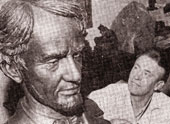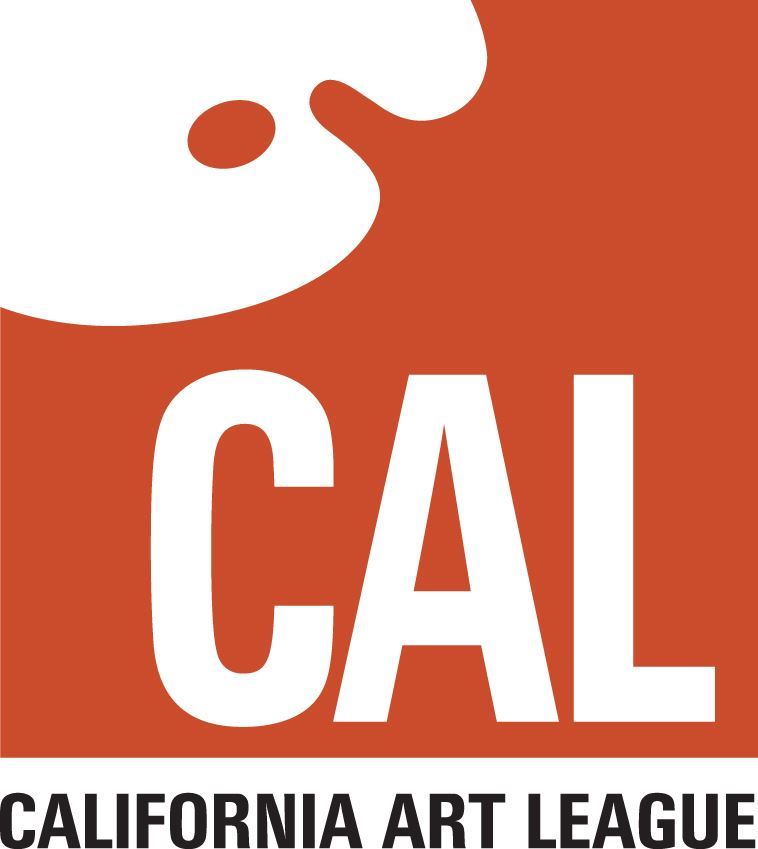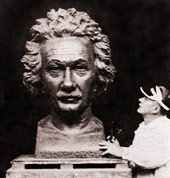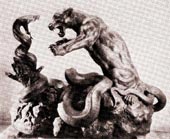| Login |
Our History
The History of the Valley Artists Guild (CAL)The Valley Artists Guild, also known as VAG, was founded in 1948 by the sculptor Henry Van Wolf (1898–1982). Coming to America from German Bavaria with his wife in the 1930s, Van Wolf brought with him only a few dollars and his sculpting tools. Moving to the San Fernando Valley, just north of the city of Los Angeles, Van Wolf had a vision of uniting the scattered artists in the valley regions. He saw the need for a fine arts community. Van Wolf boldly founded the Valley Artists Guild (VAG), not as a personal money-making scheme, but as a way for artist members to become stronger. After a period that saw entire nations blindly following egotistic personalities, the VAG was designed to give artists their own sense of individual power. Through exhibitions, affordable educational workshops and social events, the artist members of the VAG quickly flourished and grew in numbers. The VAG was there throughout our entire post-war contemporary history. In 1948, as Europe and Japan were being rebuilt, the Valley Artists Guild wrote its first mission statement. As McCarthyism raised its head and fearful citizens were building bomb shelters, VAG artists were busy building a network of peace within the community. The VAG was there, holding art exhibitions when we landed on the moon. The VAG was there as pop culture marched into our lives through television and movies, and as shopping malls and freeways plowed into our neighborhoods. Political events, earthquakes, social issues, and fashions all came and went. Because artists endure, The Valley Artist Guild remains. The VAG has never been stronger, richer, more diverse and more dedicated to delivering artists tools for success while creating a sense of community. As a non-profit organization, VAG offers art exhibitions in gorgeous professional gallery settings, educational painting and sculpture workshops, as well as seminars on ways to promote and share our work. Add to this the opportunity to meet other creative people and you have the formula for six successful decades of presence. In the twenty-first century, artists continue to reflect their own poetic joys and interests just as the Valley Artists Guild continues to empower artists. The VAG carries the torch of a flame lit long ago by people who knew art would always matter. The Valley Artists Guild now carries that torch to new places, creating new paths and opportunities for future generations of creative people. In 2005, to bring the Valley Artists Guild to the next level of influence, it was decided to change our name to become more encompassing and inclusive. After a lot of thought, everyone in the Board of Directors agreed that the name "California Art League" would be a much better name. It was adopted and has served us well since. by John Paul Thornton Biography of Henry Van WolfHenry Van Wolf was born in Bavaria and educated in Munich where he studied sculpture and bronze technique under the world famous sculptor Ferdinand von Miller in Munich. He also studied life drawing, watercolor and oil painting, silversmithing, artmetal and repousee work, and art-enameling in different schools and with various teachers in Munich. As a small boy in elementary school, his teachers told Henry to do illustrations in pencil and watercolor of the stories in the text books of the class for his homework. The head of the Board of Education in Munich, Dr. Kerschensteiner, and all his teachers, called Henry, “The little Albrecht Dürer.” All of Henry's work became property of the Student’s Museum. Henry and his wife, Veronica, strongly opposed the political changes in Germany and left the country in 1928. Henry arrived in New York with $1 in his pocket and 250 lbs. of tools. They both became American citizens in 1935. First they moved into an old ground floor flat near the East River in New York City at 44 East End Avenue; the largest room of that flat served as Henry's temporary studio. ht in this ground floor flat Henry created his life-size Polar Bear under his original name of Henry Wolf, which he officially changed to Henry Van Wolf in 1939, since three artists in New York had the same name of Henry Wolf. When the Polar Bear was completed and ready for the Art Bronze Foundry, Henry rented a one-family house in Brooklyn with a large garage. A while later he bought the house and built a studio where he finished his Polar Bear in bronze which has won three first prizes in major art exhibitions. The Polar Bear sculpture was completed in 1930. In 1944 the Van Wolf's moved to Van Nuys, California, since the climate in New York was not to their liking. |
Van Wolf Gallery
VAG was founded by sculptor Henry Van Wolf (1898–1982). Samples of his work can be found below.
 Peace on Earth
Created 1959–1961
Erected by Garden Grove Community Church 1964 |


